| Mubychem Group, established in 1976, is the pioneer manufacturer of Ammonium Carbonate, Pharmaceutical, Fragrance & Flavor chemicals in India. Mubychem Group has several manufacturing facilities spread across Gujarat and Mumbai India and world wide contacts and toll manufacturers. We are exporting globally to countries like USA, Canada, Europe, UAE, South Africa, Tanzania, Kenya, Egypt, Nigeria, Uganda, Turkey, Mexico, Brazil, Chile, Argentina, Dubai etc. |
The participating units have one or more accreditations like FDA - GMP approval; ISO-9001 Certified; "REACH"registered; ISO-22000; Kosher Certified;Halal Certified; HACCP. We offer Pure & IP BP USP FCC Food Grade ACS AR Analytical Reagent Grades of Chemicals | |
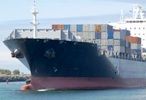

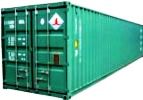

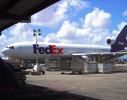

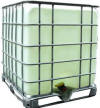
Ammonium Carbonate SDS MSDS Sheet of Manufacturers
Specifications of Ammonium Carbonate Manufacturers
Ammonium Carbonate
Pure and USP ACS AR FCC Food Grades
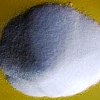
Ammonium Carbonate SDS MSDS Sheet, Material Safety Data Sheet
1. Product Identification
CAS No.: 8000-73-5 or 10361-29-2
EINECS EC Number: 233-786-0
Recommended usage: Industrial Manufacturing.
Suppliers: As per letterhead.
2.Hazards Identification
GHS, Globally Harmonized System Classification in accordance with 29 CFR 1910
Classification according to Regulation (EC) No 1272/2008:
Acute toxicity, Oral Category 4
Hazardous to the aquatic environment, acute hazard Category 3
Labeling according to GHS & Regulation (EC) No 1272/2008
GHS Label Elements  Irritant |
Signal Words: Warning
Hazard statements:
H302: Harmful if swallowed.
H315: Causes skin irritation.
H318: Causes serious eye damage.
H402: Harmful to aquatic life.
Precautionary statements:
P264 Wash skin thoroughly after handling.
P270 Do not eat, drink or smoke when using this product.
P273 Avoid release to the environment.
P280: Wear protective gloves/protective clothing/eye protection/face protection.
P314: Get Medical advice/attention if you feel unwell.
P362: Take off contaminated clothing and wash before reuse.
P301+P312: IF SWALLOWED: Call a POISON CENTER or doctor/physician if you feel unwell.
P302+352: IF ON SKIN: Wash with soap and water.
P332+313: If skin irritation occurs: Get medical advice/attention.
P305+351+338: IF IN EYES: Rinse cautiously with water for several minutes. Remove contact lenses if present and easy to do – continue rinsing.
P330: Rinse mouth.
P501 Dispose of contents/ container to an approved waste disposal plant.
Classification according to EU Directives 67/548/EEC or 1999/45/EC:
Xn: Harmful, Xi: Irritant, R22: Harmful if swallowed.
For the full text of the S-statement & R-phrases mentioned in this Section, see Section 16.
3. Composition/Information on Ingredients
Ingredient: Ammonium Carbonate
CAS No.: 8000-73-5 or 10361-29-2
EINECS EC Number: 233-786-0
4. First Aid Measures
Always seek medical attention after first aid measures are provided.
Inhalation: Remove to fresh air. If not breathing, give artificial respiration. If breathing is difficult, give oxygen. Get medical attention.
Ingestion: Do not induce vomiting unless as directed by medical personnel. Never give anything by mouth to an unconscious person. Get medical attention.
Skin Contact: Immediately flush skin with plenty of water for at least 15 minutes. Remove contaminated clothing and shoes. Get medical attention. Wash clothing before reuse. Thoroughly clean shoes before reuse.
Eye Contact: Check for and remove any contact lenses. In case of contact, immediately flush eyes with plenty of water for at least 15 minutes. Cold water may be used. Get medical attention.
5. Fire Fighting Measures
Fire: Ammonium Carbonate is not considered to be a fire hazard. At fire temperatures ammonium carbonate begins to corrode metals and may dissociate into ammonia, oxides of nitrogen and carbon dioxide.
Fire Extinguishing Media: Use water spray, alcohol-resistant foam, dry chemical or carbon dioxide. Water spray may be used to keep fire exposed containers cool.
Special Information: In the event of a fire, wear full protective clothing and NIOSH-approved self-contained breathing apparatus with full face piece operated in the pressure demand or other positive pressure mode.
6. Accidental Release Measures
Small Spill: Use appropriate tools to put the spilled solid in a convenient waste disposal container. Finish cleaning by spreading water on the contaminated surface and dispose of according to local and regional authority requirements.
Large Spill: Use personal protective equipment. Avoid dust formation. Avoid breathing vapors, mist or gas. Ensure adequate ventilation. Avoid breathing dust. Use a shovel to put the material into a convenient waste disposal container. Do not let product enter drains. Pick up and arrange disposal without creating dust. Sweep up and shovel. Keep in suitable, closed. containers for disposal.
7. Handling and Storage
Keep in a tightly closed container. Protect it from physical damage. Store it in a cool, dry, ventilated area away from sources of heat, moisture and incompatibilities. Containers of Ammonium Carbonate material may be hazardous when empty since they retain product residues (dust, solids); observe all warnings and precautions listed for the product.
8. Exposure Controls/Personal Protection
Airborne Exposure Limits: Not established
Ventilation System: A system of local and/or general exhaust is recommended to keep employee exposures below the Airborne Exposure Limits. Local exhaust ventilation is generally preferred because it can control the emissions of the contaminant at its source, preventing dispersion of it into the general work area. Please refer to the ACGIH document, Industrial Ventilation, A Manual of Recommended Practices, most recent edition, for details.
Personal Respirators (NIOSH Approved): If the exposure limit is exceeded and engineering controls are not feasible, a half face piece particulate respirator (NIOSH type N95 or better filters) may be worn for up to ten times the exposure limit or the maximum use concentration specified by the appropriate regulatory agency or respirator supplier, whichever is lowest.. A full-face piece particulate respirator (NIOSH type N100 filters) may be worn up to 50 times the exposure limit, or the maximum use concentration specified by the appropriate regulatory agency, or respirator supplier, whichever is lowest. If oil particles (e.g. lubricants, cutting fluids, glycerin, etc.) are present, use a NIOSH type R or P filter. For emergencies or instances where the exposure levels are not known, use a full-face piece positive-pressure, air-supplied respirator.
Skin Protection: Wear impervious protective clothing, including boots, gloves, lab coat, apron or coveralls, as appropriate, to prevent skin contact.
Eye Protection: Use chemical safety goggles and/or full face shield where dusting or splashing of solutions is possible. Maintain eye wash fountain and quick-drench facilities in work area.
9. Physical and Chemical Properties
Appearance: White Solid.
Odor: strong Ammonia Odor.
pH of Ammonium Carbonate : >9
Melting Point: 58C
Solubility: Soluble in water.
Vapor Density (Air=1): 1.9
Vapor Pressure (mm Hg): 1.0 @ 160C (320F)
10. Stability and Reactivity
Stability: Stable under ordinary conditions of use and storage.
Hazardous Decomposition Products: Ammonium Carbonate involvement in a fire causes decomposition to form carbon dioxide and ammonia.
Hazardous Polymerization: Will not occur.
Incompatibilities: Concentrated acids, strong bases, oxidizing agents, heat.
11. Toxicological Information
Acute toxicity:
LD50 Oral - Rat - male and female: 2.150 mg/kg
LD50 Oral - Rat - female: 1.800 mg/kg
LD50 Dermal - Rat : > 2.000 mg/kg
LD50 Intravenous - Mouse: 96 mg/kg
Carcinogenicity: The product is not classed as carcinogen by IARC, ACGIH, NTP, OSHA.
12. Ecological Information
Toxicity to fish: LC50 (96 h) 61 mg/l, Oncorhynchus mykiss (Flow through.) Literature.
Toxicity to daphnia and other aquatic invertebrates: EC50 (48 h) 63.7 mg/l, Daphnia magna.
This substance/mixture contains no components considered to be either persistent, bioaccumulative and toxic (PBT), or very persistent and very bioaccumulative (vPvB) at levels of 0.1% or higher.
13. Disposal Considerations
Whatever cannot be saved for recovery or recycling should be managed in an appropriate and approved waste disposal facility. Processing, use or contamination of this product may change the waste management options. State and local disposal regulations may differ from federal disposal regulations. Dispose of container and unused Ammonium Carbonate in accordance with legal requirements.
14. Transport Information
DOT (US) ADR/RID: Not Regulated
IMDG:
Not dangerous goods
IATA: Not dangerous goods
15. Regulatory Information
USA:
SARA 302: No chemicals in this material are subject to the reporting requirements of SARA Title III, Section 302.
SARA 313: This material does not contain any chemical components with known CAS numbers that exceed the threshold (De Minimis) reporting levels established by SARA Title III, Section 313.
SARA 311/312 Hazards: Acute Health Hazard
California Prop. 65 Components: This product does not contain any chemicals known to State of California to cause cancer, birth defects, or any other reproductive harm.
Canada WHMIS: Class D1B, Toxic materials
16. Other Information
EINECS EC Number: 208-058-0
H302 Harmful if swallowed.
H315: Causes skin irritation.
H318: Causes serious eye damage.
H402: Harmful to aquatic life.
Xn = Harmful.
Xi: Irritant
R22 = Harmful if swallowed.
Disclaimer:
*************************
Our company provides this SDS information sheet contained herein in good faith but makes no representation as to its comprehensiveness or accuracy. This MSDS sheet is intended only as a guide to the appropriate precautionary handling of the material by a properly trained person using this product. Individuals receiving the information must exercise their independent judgment in determining its appropriateness for a particular purpose.
*************************
Ammonium Carbonate USP ACS FCC Food grade Manufacturers:
MUBYCHEM GROUP
CHINCHBUNDER, MUMBAI 400009, INDIA
TEL: (OFFICE) 91-22-23774610, 91-22- 23723564. 91-22-23728264
e-mail: anmol@pcmenergy.com

Copyright and Usual Disclaimer is Applicable.

Global or International Ammonium Carbonate USP ACS FCC Food Grade Suppliers, Exporters, Importers, Manufacturers
If I give you “My Word” Nobody can undo it.
If I sign an “Agreement” my Lawyer will undo it
Perfection is made up of small thing but it is not small.
